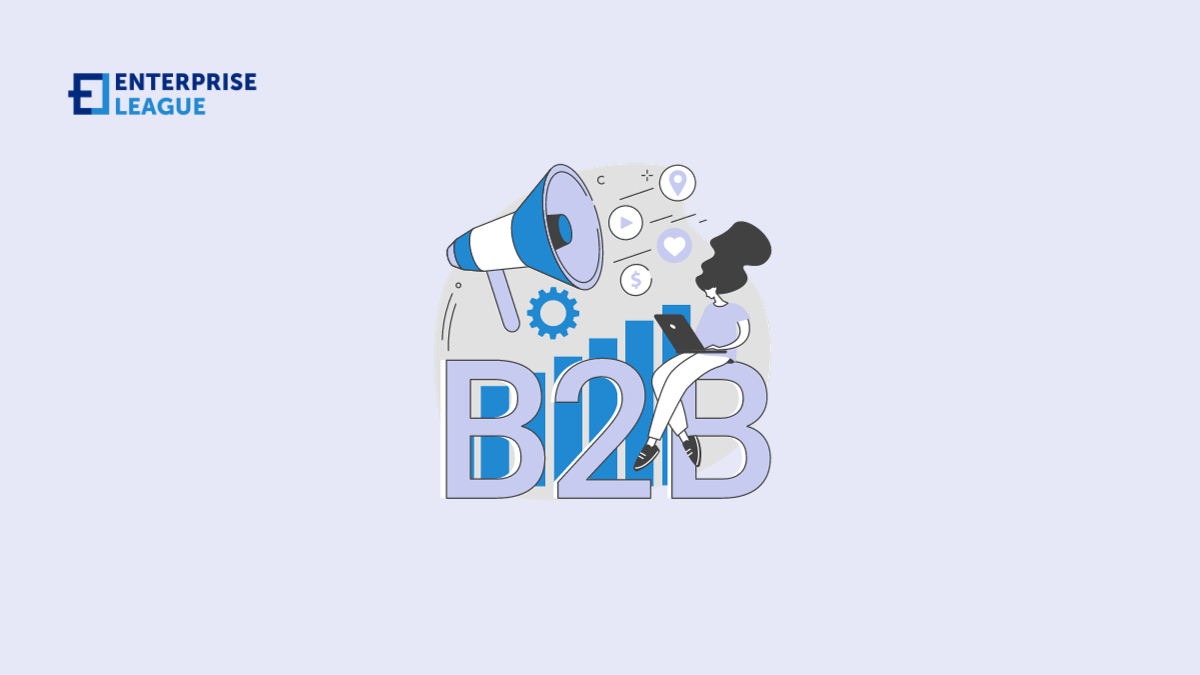Building a beloved brand in the B2B space takes way more than just slapping together a decent logo and catchy tagline.
For a B2B company to really connect with its audience on a deeper level, that brand identity absolutely must resonate emotionally with potential buyers.
And get this – according to one study, over 77% of customers are more likely to stay loyal to brands that share their same values and beliefs. It’s pretty clear today’s B2B buyers want more than just an efficient product or service from companies. They really want to feel understood and valued as people.
In this post, we’ll explore some key strategies to create a B2B brand identity that forges those meaningful connections with your target audience. You’ll get some research-backed tips for crafting compelling stories, choosing visual elements that reinforce your brand narrative, and bringing your identity to life through consistent customer experiences.
With the right approach to shaping your branding, you can develop an authentic and memorable B2B brand that buyers can really trust and love. Whether you’re looking to refine your existing brand or start totally from scratch, this guide will walk you through the process of building a strong, differentiated brand that attracts your ideal customers. Let’s dive in!
What goes into a B2B brand identity?
As I mentioned above, a B2B brand is so much more than a logo or color scheme. It’s the full impression your company makes on others. To shape that identity, let’s look at a few key components:
Visual elements
Think about the visuals people link to your brand – logo, fonts, colors, imagery, website, etc. What look and feel best reflects your image? Is it bold colors or muted tones? Modern or classic? Your visual identity should align with your brand personality.
Messaging and tone
Your communication style matters as much as the content. Do you take an informal or formal tone? Do you tell stories or rattle off facts? Make sure your messaging resonates with your audience’s preferences.
Purpose and values
When these facets work in harmony, you build an authentic brand identity that resonates at an emotional level with customers. This strong foundation is crucial for B2B marketing success.
Flexing your emotional muscles to connect with your audience
Forging genuine connections with B2B buyers requires a deep understanding of who they are and what drives them. Before diving into proven strategies to connect emotionally, it’s important to first recognize that in the B2B space, success is ultimately determined by the ability to empathize with customers and solve their pain points.
Let’s explore some techniques to uncover those needs and craft compelling brand experiences.
Get to know your buyers
Research your target personas extensively to pinpoint their core needs and challenges. Go beyond basic demographics to uncover what motivates them. What keeps them up at night? What do they wish was easier? Peel back the layers on their pain points.
Identify the pain you alleviate
With deep buyer insights, you can see exactly where your brand fits in. How do you make their jobs simpler? What solutions do you offer? Make sure your messaging highlights the specific buyer struggles you address.
Craft compelling stories
B2B buyers respond to stories over laundry lists of product features. Share case studies of customers you’ve helped. Use vivid language to paint a picture of how you solved problems. Stories show you “get” buyers and build an emotional bridge.
Convey reliability
B2B purchases often require sign-off across an organization. Your brand needs to project expertise and trustworthiness. Share proof points like credentials, test results, security policies – whatever reflects your capability and integrity.
Leverage customer successes
Social proof goes a long way, so spotlight customer wins enabled by your brand. Get their testimonials. Show quantifiable outcomes. This builds credibility while showcasing real-world impact.
Deliver consistent experiences
Every touchpoint should reinforce your brand identity. Ensure messaging, visuals, tone, and experience align across web, content, sales materials, events, support, and more. Consistency breeds familiarity and trust.
Making authentic connections requires work but pays off with loyal, engaged B2B relationships. Set your brand up for success by keeping the customer at the center.
Keys for crafting a distinct and memorable B2B brand
Establishing a distinctive brand that resonates in the B2B space goes far beyond surface-level messaging or visuals. At its foundation, memorable branding requires identifying your unique value and reinforcing it through every touchpoint. But it doesn’t stop there.
Consistency, adaptability, and continuous refinement are also essential.
With that in mind, here are some key strategies to help define and express your differentiators to create stickiness.
Pinpoint your differentiators
Do exhaustive research to identify what sets you apart. What unique capabilities, knowledge, or process do you possess? What gaps do you fill or needs do you meet better than anyone else? Your differentiated strengths should shine clearly in your messaging and positioning.
Align visuals with messaging
Every visual component should complement your core messaging. For example, use bold, striking visuals if you want to convey innovation and leadership. Or opt for a more minimalist aesthetic to telegraph precision and accuracy. Your visual identity should never dilute your messaging.
Balance consistency with adaptability
Leverage data and research
Continually mine data on buyer behavior, market trends, and brand sentiment to guide branding decisions. Research helps you know when it’s time to widen your audience, readjust messaging, or even overhaul your visual identity. Never brand in a vacuum.
Track perceptions and feedback
Actively monitor how your brand is perceived through surveys, reviews, and online listening. Solicit feedback to catch any erosion of trust or shifts in sentiment. Make course corrections quickly to realign when needed.
Periodic refreshes
As a rule of thumb, reassess branding every 2-3 years. Small tweaks can freshen things up, like updating photography or illustrations. Major milestones like mergers, leadership changes, or new product lines also signal a rebrand.
With ongoing diligence, you can craft a B2B brand identity that stands out from the pack. Don’t just set it and forget it – adapt intelligently as needs evolve.
Bringing your brand identity to life
An impressive brand strategy makes little impact if it never moves beyond the theoretical. Successful execution requires translating branding elements into concrete experiences across channels. This activation process leans heavily on coordinated teams and seamless collaboration. When done right, it helps personality and values leap off the page.
As we explore techniques to give life to your brand identity truly, keep top of mind the importance of cohesion between external presence and internal culture.
Rally your employees
Your people are your secret branding weapon. Train them thoroughly on brand messaging, tone, values, and personalities. Set clear expectations for upholding the brand and celebrate wins. Engaged employees will personify your brand authentically.
Ensure marketing alignment
Eliminate confusion by creating clear branding guidelines for internal teams. Make sure messaging, visuals, and experiences are consistent across all materials, channels, and campaigns. Don’t dilute your brand through disjointed marketing.
Deliver on promises
You’ll shatter trust if you overpromise and underdeliver. Be honest about capabilities, timelines, and results. Then rigorously ensure you meet expectations set by your brand. Follow-through is everything.
Build a supportive culture
Your culture either reinforces or undermines your brand. Foster an environment that enables employees to exemplify your brand values. Empower them to share feedback to continually improve.
Allow for thoughtful evolution
As your company grows, so should your brand. Adapt it when entering new markets or releasing updated products, but stay rooted in your core identity. Thoughtful evolution keeps your brand fresh and authentic.
Great brands proactively manage the execution of brand strategy across the organization. They turn identity into action through engaged employees, consistent experiences, and delivering on promises. This brings the true spirit of the brand to life.
Conclusion
In today’s world, B2B buyers expect more than just transactions – they want real relationships rooted in trust and shared values. By taking the right approach to shaping your brand identity, you can foster those meaningful connections that lead to loyalty and success.
More must-read stories from Enterprise League:
- Debunking the most common myths of entrepreneurship.
- Common hiring mistakes that employers make and how to prevent them.
- Unique and profitable drone business ideas you should be aware of.
- Aspects that show the importance of cross-cultural communication in the workplace.
- Find out all the things that make messy people smarter.
Related Articles
The 9 Best Payment Processing Services for SaaS
Running a software business means handling money from customers who expect things to work smoothly. They sign up, enter their card details, and assume the rest happens without a hitch. On your end, though, payment processing is a whole different story. You need...
Building a U.S. Real Estate Portfolio: Why Beverly Hills Should Be Your First Step
The United States has long been a magnet for real estate investors seeking stable returns and prestige. Among its many luxury markets, one name consistently stands out: Beverly Hills. Known worldwide for its glamour and exclusivity, it represents more than just a...
Top 7 SEO Services for Law Firm Websites
In the legal sector, digital visibility is the primary determinant of case volume. For attorneys, implementing a specialized SEO service for Law Firm website is a fundamental requirement for operational stability. Generalist marketing strategies frequently fail in...
The 9 Best Payment Processing Services for SaaS
Running a software business means handling money from customers who expect things to work smoothly. They sign up, enter their card details, and assume the rest happens without a hitch. On your end, though, payment processing is a whole different story. You need...
Building a U.S. Real Estate Portfolio: Why Beverly Hills Should Be Your First Step
The United States has long been a magnet for real estate investors seeking stable returns and prestige. Among its many luxury markets, one name consistently stands out: Beverly Hills. Known worldwide for its glamour and exclusivity, it represents more than just a...






